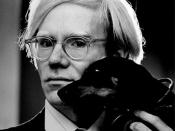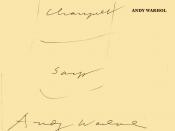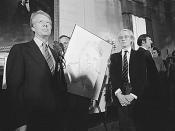Introduction
Andy Warhol became famous in the early 1960s for his now-legendary artworks featuring Campbell Soup cans. In the 1970s and 1980s, he began using photography and silk-screening techniques to capture portraits of everyday objects and celebrities like Elvis Presley, Elizabeth Taylor and Marilyn Monroe. When critics attacked his work as boring and unoriginal, he would reply that he was not a "creator" of art but a "recreator" (McShine, 1989). Critics wanted to know if he painted everyday items like Brillo pads, to make fun of commercialism or "did Warhol want to glorify commercial America. Were those soup cans lampooning success, or were they symbols of an affluent society? To some, Warhol used soup cans as Cézanne used apples" (Art in America, 1987, p. 143)
Background
Andy Warhol was born in 1927 (or 1928, no one knows for sure) as Andrew Warhola near Pittsburgh to Czech immigrant parents. His father, who died when Warhol was a child, was a coal miner.
After graduating from Carnegie-Mellon University, Warhol worked at odd jobs before moving to New York City in his twenties. (Warhol Foundation, n.d.)
As an illustrator for advertisements, he won the 1957 Art Director's Club Medal for a giant shoe ad. He also is remembered for a 1961 Lord & Taylor department store window display he did using blown-up paintings of the Dick Tracy comic strip. By 1959, his first serious work was being exhibited at the Bodley Gallery in New York. (Warhol Foundation, n.d.)
By 1965, Andy Warhol was no longer just making pictures of celebrities. He became a celebrity. When the Institute of Contemporary Art in Philadelphia exhibited a retrospective of his work, 4,000 people showed up for the opening. The curators, knowing this could be a security risk, removed the paintings and hosted the opening of the...



Andy Warhol
Great essay. Although you explained the motivations and concepts behind his artworks really well, I think you missed one of his most important areas of artmaking: film, which he dedicated alot more time to than his paintings. I think one of the most genius aspects of his work was the way he played and manipulated the media.
4 out of 4 people found this comment useful.